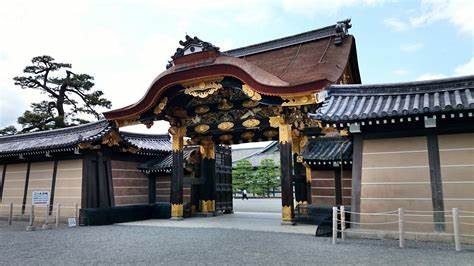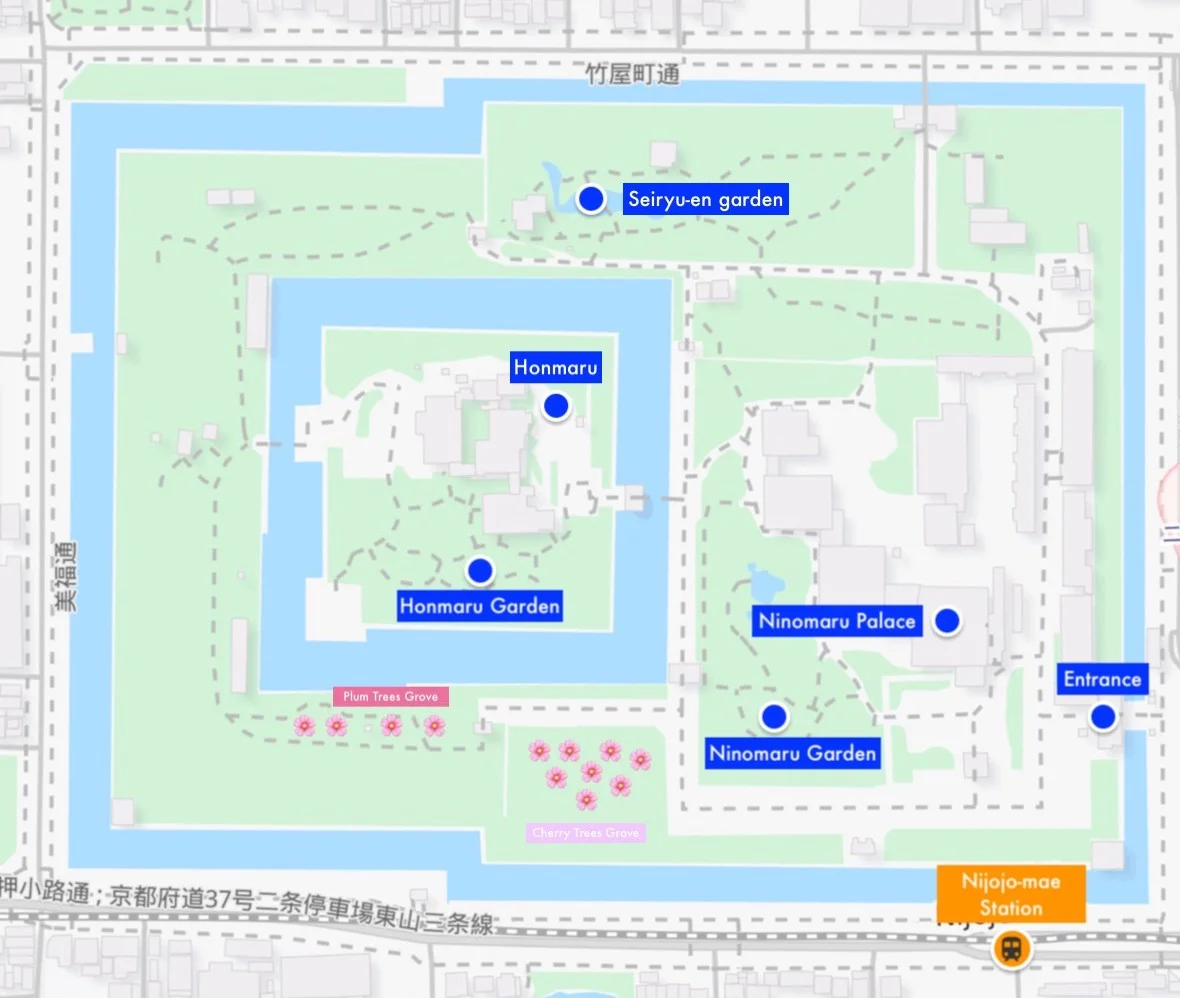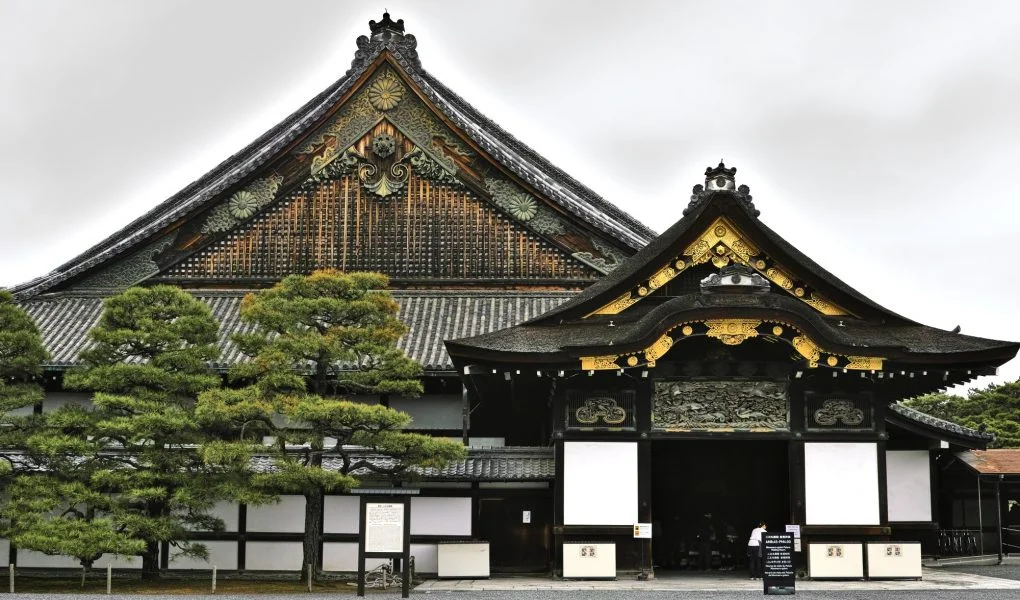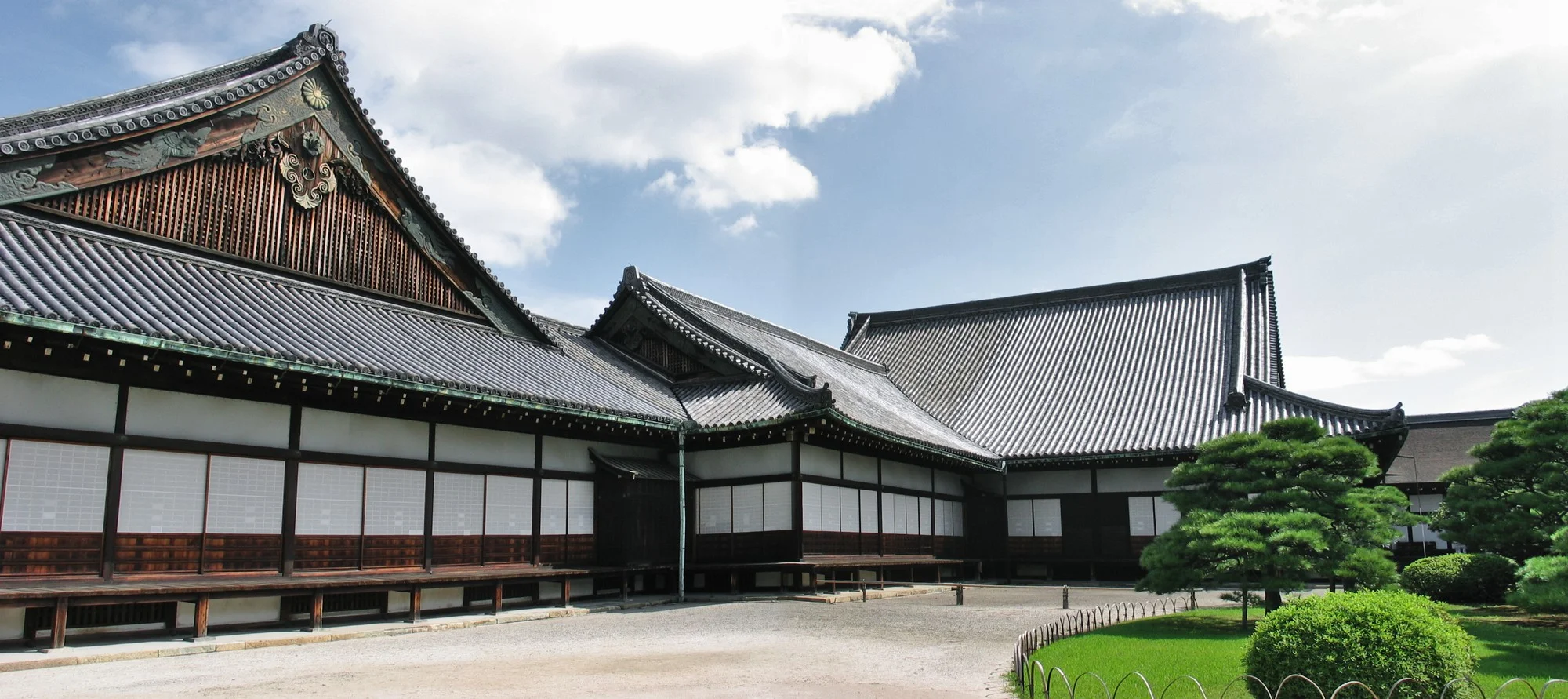Nijo Castle – A Historic Landmark in Kyoto, Japan
Nijo Castle (Nijō-jō) is one of Kyoto’s most significant and beautifully preserved historic sites. Built in the early 17th century, this UNESCO World Heritage Site was the residence of the Tokugawa shoguns during their visits to Kyoto and served as a symbol of the power and authority of the shogunate. Its stunning architecture, beautifully landscaped gardens, and historical significance make it a must-visit attraction in Kyoto.
Why Visit Nijo Castle?
🏯 Impressive Architecture
Nijo Castle features two main sections: the Ninomaru Palace, where the shoguns resided, and the Honmaru, which was the inner citadel. The palace is known for its ornate design, intricate woodwork, and sliding doors painted with beautiful works of art. The Ninomaru Palace is particularly famous for its “nightingale floors”, which squeak when walked upon, a clever security feature designed to alert inhabitants of any intruders.
🌳 Beautiful Gardens
The castle is surrounded by lush gardens, including a stunning Japanese-style garden that showcases carefully arranged rocks, ponds, and seasonal flowers. The Ninomaru Garden is particularly famous for its dry landscape garden with rocks arranged to symbolize mountains and rivers. The gardens are perfect for a peaceful stroll and reflect the traditional Japanese appreciation of nature.
🎨 Famous Artwork
Inside the Ninomaru Palace, you’ll find the iconic paintings on the sliding doors (fusuma), depicting scenes of nature, animals, and mythology. These works of art were created by famous artists of the time and are an integral part of the historical and cultural experience.
🏰 Historical Significance
Nijo Castle was built by Tokugawa Ieyasu, the first shogun of the Tokugawa shogunate, as a symbol of his power. It served as the headquarters for the Tokugawa shogunate in Kyoto and was the site of many important events in Japan’s feudal history. The castle is a great place to learn about the period of the Edo era (1603–1868) and the role the shogunate played in Japan’s history.
🌸 Seasonal Beauty
The gardens of Nijo Castle are especially beautiful during spring when the cherry blossoms bloom, and in autumn, when the leaves turn brilliant shades of red, orange, and yellow. The seasonal changes offer a perfect backdrop for photography and reflection.
Best Time to Visit Nijo Castle
The best time to visit Nijo Castle is during the spring (March to May) when the cherry blossoms are in full bloom, or autumn (October to November) for the vibrant fall foliage. However, the castle is open year-round and offers unique experiences in each season.
How to Get to Nijo Castle
- From Kyoto Station: Take the #9 bus or a short taxi ride to Nijo Castle. It is also a 15-minute walk from Karasuma Oike Station on the subway.
- From Gion: It’s about a 20-minute taxi ride or a 10-minute bus ride.
Tips for Your Visit
- Allocate time: To fully appreciate the beauty and history of Nijo Castle, plan to spend around 1.5 to 2 hours exploring the grounds, palace, and gardens.
- Wear comfortable shoes: The castle grounds are expansive, so comfortable shoes are a must for walking.
- Respect the artwork: Photography is not permitted inside the Ninomaru Palace, especially near the delicate sliding doors, so be sure to enjoy the artwork without touching or disturbing it.
- Check for special events: Occasionally, Nijo Castle hosts special exhibitions or seasonal events, such as nighttime illuminations, so check the schedule before your visit.
Plan Your Visit to Nijo Castle
Whether you’re fascinated by feudal Japanese history, love traditional architecture, or simply want to enjoy the tranquil gardens, Nijo Castle offers a rich and immersive experience. Don’t miss this iconic piece of Kyoto’s heritage when planning your visit to Japan!
editor's pick
latest video
news via inbox
Nulla turp dis cursus. Integer liberos euismod pretium faucibua










